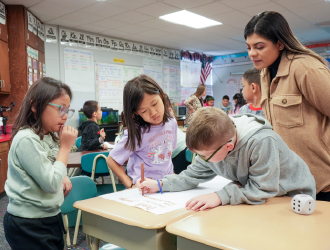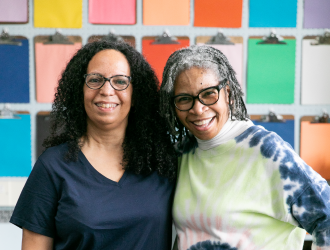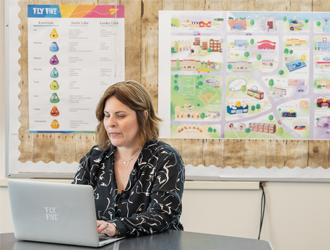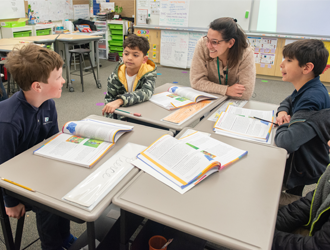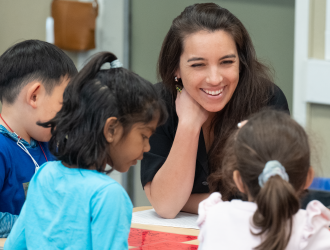Encouraging Safety and Respect in the Classroom
When we understand and incorporate students' rich identities into schoolwork and daily activities, learning environments become more tailored to our student's individual wants and needs. This builds a supportive, safe, and respectful learning environment where all students are more likely to thrive. Consider the following ways to increase student belonging through mutual respect, home-to-school connections, and trust.

Engaging in student-led learning and conversations helps educators really get to know their students. Taking the opportunity to listen and discover individual developmental characteristics helps determine how to structure instruction, how to be a better advocate in the classroom, and how to respond to challenging circumstances with empathy and respect.

Take a Moment
When in doubt, take a moment to step back and listen. Paying attention to student voice is the first step in giving students autonomy and respect in the classroom. Student voice also encourages cooperation and empathy skills, such as working toward a common goal or valuing each other's differences. Student centered teaching can look like:
- Letting students lead in setting academic and social goals. Follow up with their goals by making them important and visible, by clearly displaying them in the classroom for students to refer back to. Create additional opportunities for peers to reflect on their goals by offering a resource that asks questions, or encourage a daily journal practice.
- Using reinforcing language. Reinforcing language and student-led goal setting, helps learners identify how classroom rules connect to their goals. This will increase student engagement and motivate them to achieve the expectations they’ve set up for themselves.
- Creating interactive learning structures. Setting up an interactive learning structure helps foster cooperative learning. Guiding students by identifying their strengths, can facilitate student exploration in groups and help them connect their goals to group tasks.
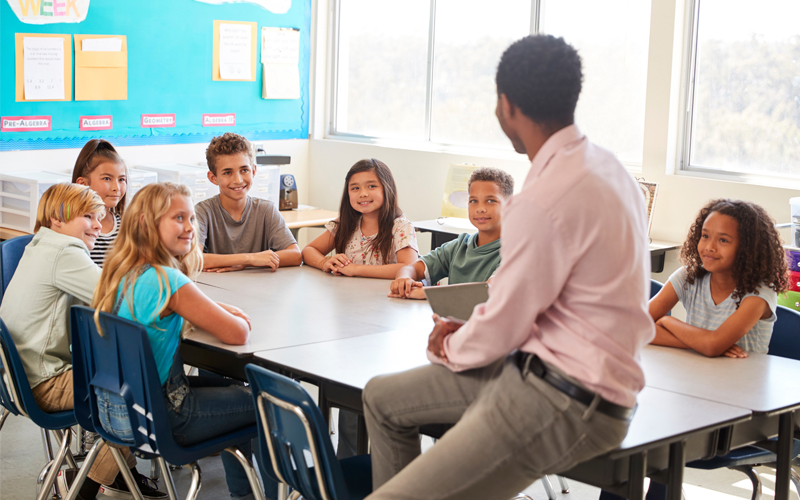
Take Risks Together
A welcoming classroom environment fosters student belonging. Through positive and inclusive language that supports a diverse group of students, learners are more likely to feel comfortable and connected (Ross, 2020). As students develop, it’s important for them to take risks and ownership over their learning. Here are a few ways to foster an environment where students feel safe enough to take risks:
- Teach students that mistakes are valuable. When students believe they can learn and grow from their mistakes, they are more likely to learn how to do things differently the next time. Celebrating perseverance and offering solutions like allowing retakes, can provide students with opportunities to grow.
- Implement “Failure Fridays.” A teacher from Florida set up a Friday activity that students began to look forward to—“Failure Fridays”—where they shared, in a lighthearted way, things they were looking to practice (Guzman Ingram, 2017). When educators take risks and model what they are working on to start, it shows students that we’re all working toward our own goals with unique strengths and differences.
- Partner with families. Learning from our students' families can help educators bring more of students’ home lives into the classroom. It also provides opportunities for greater understanding of their identity and individual cultures. Using lesson plans that represent their unique identities can increase belonging, deepen student-teacher relationships, and encourage students to respect differences.
Creating an inclusive classroom environment where students feel safe to take risks encourages their growth mindset. When we understand and incorporate students' rich identities into school work and daily activities, learning environments become more tailored to our classes' individual wants and needs. This empowers students to set goals and high standards for themselves, hold their classmates accountable respectfully, and work as a team.
References
Cohn-Vargas, B., & Steele, D. M. (2015, October 21). Creating an identity-safe classroom. Edutopia. https://www.edutopia.org/blog/creating-an-identity-safe-classroom-becki-cohn-vargas-dorothy-steele
Guzman Ingram, L. (2017, September 14). A classroom full of risk takers. Edutopia. https://www.edutopia.org/article/classroom-full-risk-takers
Ross, D. (2020, February 11). Strategies for cultivating a classroom that represents students. Responsive Classroom. https://www.responsiveclassroom.org/strategies-for-cultivating-a-classroom-that-represents-students/



